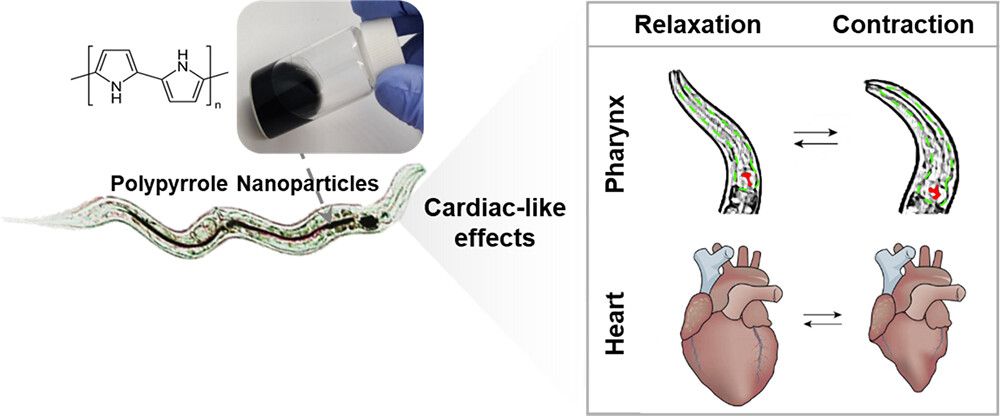
New paper in ACS Nano!
The article “Arrhythmic Effects Evaluated on Caenorhabditis elegans: The Case of Polypyrrole Nanoparticles” was published in The American Chemical Society: Nano!
NN group member Sumithra Yasaswini Srinivasan published this paper under the supervision of Anna Laromaine among others. In this article, they assessed the general and pharyngeal effects of drugs and polypyrrole nanoparticles using C. elegans, since these animals share a lot of similarities with the human heart and they are used as a model for treating cardiac arrhythmia deseases.
Abstract:
Experimental studies and clinical trials of nanoparticles for treating diseases are increasing continuously. However, the reach to the market does not correlate with these efforts due to the enormous cost, several years of development, and off-target effects like cardiotoxicity. Multicellular organisms such as the Caenorhabditis elegans (C. elegans) can bridge the gap between in vitro and vertebrate testing as they can provide extensive information on systemic toxicity and specific harmful effects through facile experimentation following 3R EU directives on animal use. Since the nematodes’ pharynx shares similarities with the human heart, we assessed the general and pharyngeal effects of drugs and polypyrrole nanoparticles (Ppy NPs) using C. elegans. The evaluation of FDA-approved drugs, such as Propranolol and Racepinephrine reproduced the arrhythmic behavior reported in humans and supported the use of this small animal model. Consequently, Ppy NPs were evaluated due to their research interest in cardiac arrhythmia treatments. The NPs’ biocompatibility was confirmed by assessing survival, growth and development, reproduction, and transgenerational toxicity in C. elegans. Interestingly, the NPs increased the pharyngeal pumping rate of C. elegans in two slow-pumping mutant strains, JD21 and DA464. Moreover, the NPs increased the pumping rate over time, which sustained up to a day post-excretion. By measuring pharyngeal calcium levels, we found that the impact of Ppy NPs on the pumping rate could be mediated through calcium signaling. Thus, evaluating arrhythmic effects in C. elegans offers a simple system to test drugs and nanoparticles, as elucidated through Ppy NPs.
Anna Laromaine, C. elegans, cardiac arrhythmia, polypyrrole nanoparticles, Sumithra

